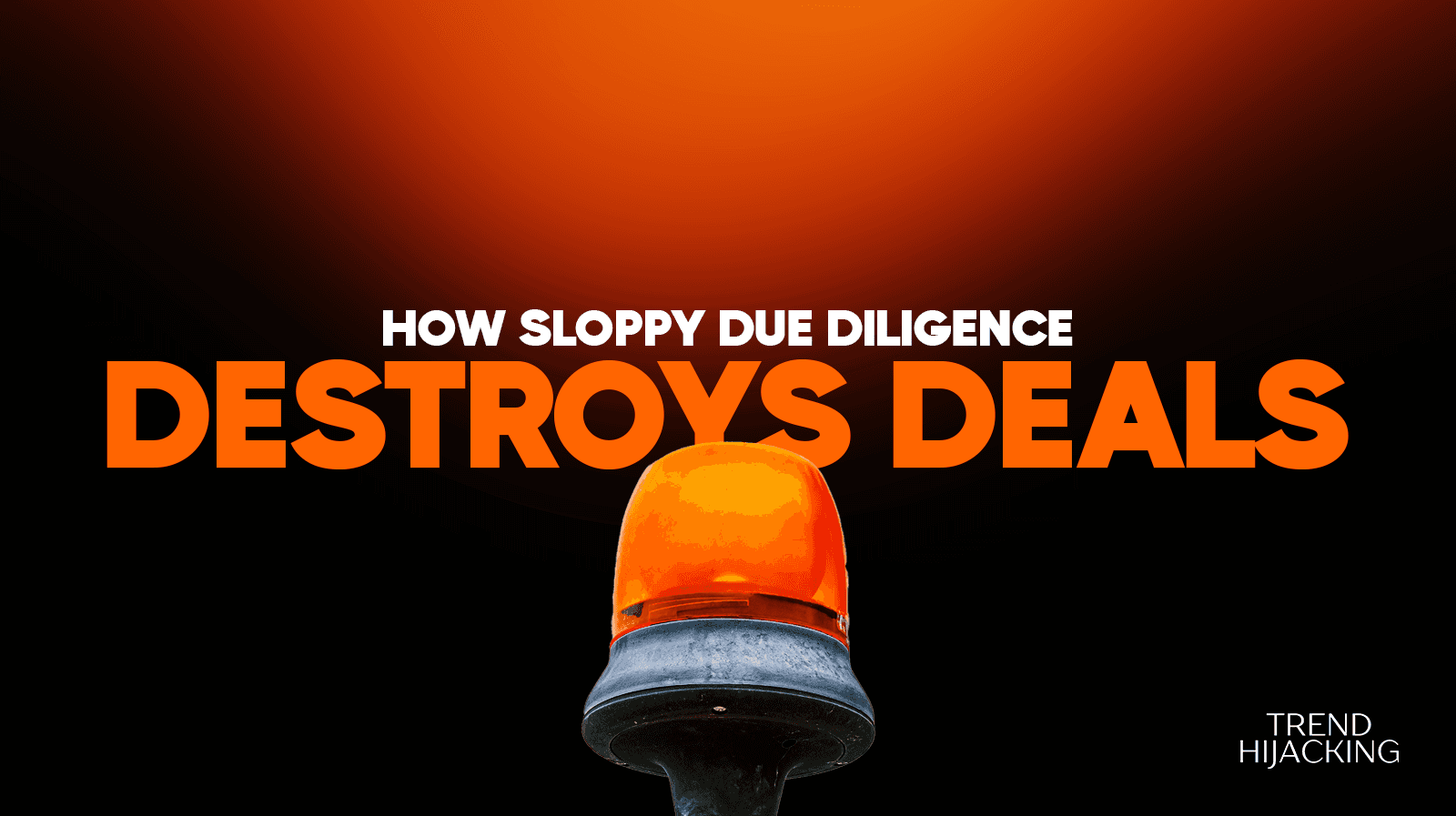Buying An Online Store: When To Say NO To A Deal
1. The Numbers Do Not Add Up

The first sign that you need to walk away from a deal is unclear or unreliable financials. Before you commit, you need to get a full picture of how the store makes money and where it goes.
Here’s What to Verify:
Profit and loss statements (at least 24 months)
Balance sheet and cash flow reports
Sales broken down by channel and product
Refunds, chargebacks, discounts, and returns
Ad spend, shipping, and payment processing fees
Any adjustments or addbacks used to boost claimed profit
What to Look For:
Revenue and profit trends that are steady or growing, not spiking and crashing
Gross margins that make sense for the niche and price point
Addbacks that are truly one-off costs, not ongoing expenses disguised as temporary
Inventory accounted for consistently, with no unexplained gaps
Walk Away If:
Financial data is missing, messy, or keeps changing
The seller refuses to share source documents
Profit depends heavily on unrealistic addbacks
The business only looks profitable in a very short time window
We Help You Buy / Build, Manage and Scale E-commerce Brands for an EXIT
E-commerce Simplified for Busy Individuals – We handle the buying, building, and scaling, so you can focus on what matters.
Growth-Focused Strategies – From sourcing to marketing, we drive growth and prepare you for a profitable exit.
Expertly Managed Exits – We build a high-value brand designed for a Lucrative exit.
2. Customer And Traffic Quality Is Weak

Traffic without quality will not turn into profit. You need to understand where visitors come from and why they buy.
What to review:
Google Analytics or similar analytics access
Channel mix: SEO, paid ads, social, email, referral, marketplaces
Branded vs non-branded search
Repeat purchase rate and time between orders
Email list size, open rate, click rate, and unsubscribe rate
Conversion rate by device and by source
Customer acquisition cost compared to customer lifetime value
A healthy online business often shows up in a few clear ways in terms of traffic.
It usually means having at least two strong traffic channels, a balanced mix of paid and organic visitors, and a real email list that drives repeat sales.
On top of all this, you’ll see a reasonable conversion rate along with a steady average order value, which keeps revenue consistent.
Walk away if:
One channel drives most sales and is at risk of change
All traffic is paid and gets more expensive over time
There is little to no repeat purchase behavior
The email list is large but the engagement is poor
The site converts poorly even with strong traffic
3. Operations Are Fragile

Profit of an online store is won or lost in operations. If the back end is shaky, growth will be painful.
What to assess:
Supplier stability, pricing, and written agreements
Backups for key products and materials
Lead times, shipping times, and delivery reliability
Return rates, defect rates, and warranty claims
Clear Standard Operating Procedures for key tasks
Tech stack soundness: platform, apps, integrations, backups
Team skills and workload, especially if the seller does most tasks
Signs of a strong setup include documented processes for fulfillment, customer service, and marketing. It also means having service levels that consistently hit their targets.
On top of that, there’s at least one reliable backup supplier or a plan to switch, and a tech stack that stays simple and secure.
Walk away if:
One supplier controls the business and can raise prices at will
There are frequent stockouts or shipping delays
The seller is the only person who knows how to run core tasks
There are no written SOPs to hand over
4. Legal, Tax, And Compliance Risks Are Unclear

Hidden risks have the power to wipe out profits if they’re not caught in time.
That’s why it’s so important to review legal and tax matters early on, before they turn into costly problems down the road.
This is exactly what you should check:
Trademark ownership for brand names, logos, and key product names
Rights to creative assets like photos, videos, and copy
Licenses for software, themes, fonts, and paid apps
Privacy and data rules for the markets served
Product claims, labeling, and safety requirements
Sales tax or VAT registration and filings where required
Open disputes, chargebacks, or letters from regulators
Walk away if:
The brand name is not protected or conflicts with another mark
Product claims are risky and not backed by evidence
Customer data practices are not documented
There are unpaid taxes or unclear tax duties
The seller will not give clear reps and warranties in the agreement
5. The Niche Is Shrinking Or Has Weak Product Fit

A strong store is built around serving a real need in the market. When demand is steady and customers genuinely value the product, growth becomes much easier to sustain.
But if interest in the product is fading, or if the offer can be quickly copied by competitors, scaling will be an uphill battle.
What to think through:
Is the niche based on a short trend or a long need
Does the brand have a real edge: quality, design, community, or service
Are there clear ways to add new products or bundles
Is the market big enough to grow without a fight on price alone
Does the pricing match the value and target buyer
Walk away if:
Search interest is falling year after year
Most competitors sell the same item with the same photos
Reviews point to weak quality or poor fit
The only way to win is to lower price
We Help You Buy / Build, Manage and Scale E-commerce Brands for an EXIT
E-commerce Simplified for Busy Individuals – We handle the buying, building, and scaling, so you can focus on what matters.
Growth-Focused Strategies – From sourcing to marketing, we drive growth and prepare you for a profitable exit.
Expertly Managed Exits – We build a high-value brand designed for a Lucrative exit.
6. The Seller Is Not Transparent

Trust is one of the most important parts of any deal. If a seller avoids tough questions or withholds key information, it’s a red flag that can hide serious problems.
A good seller, on the other hand, is open, provides clear data, and makes sure you have what you need to make a confident decision.
What good looks like:
Fast, clear answers to due diligence questions
Full read-only access to analytics, ad accounts, and email tools
Clean financials and proof of inventory and shipments
A calm timeline with no pressure to close fast
Walk away if:
The seller dodges, delays, or blames others for missing data
You cannot verify revenue, costs, or traffic with source tools
You feel pushed to skip steps or sign before you are ready
Key claims change as you ask more questions
7. The Deal Does Not Fit You

Even if a store looks strong on paper, it doesn’t always mean it’s the right match.
A business can be profitable and well-run, but if it doesn’t align with your skills, goals, or interests, it can quickly turn into a burden.
Fit matters just as much as the numbers, and choosing the wrong type of business can make success harder to achieve, even if the deal itself looks good.
Check your match on:
Time: how many hours per week the store needs
Skills: marketing, operations, product, finance
Money: cash needs for inventory, ads, and team
Risk: comfort with platform policies and supply shocks
Goals: cash flow vs growth vs exit timeline
Walk away if:
You would need to learn too many new skills at once
The store needs more capital than you planned
The risk profile keeps you up at night
The growth plan does not match your goals
8. Price And Terms Do Not Make Sense

A store might look solid and promising, but the deal can still fall apart if the price is unrealistic or the terms don’t work in your favor.
Paying too much upfront or accepting terms that put all the risk on you can turn a good business into a bad investment.
The value has to match both the numbers and the structure of the deal for it to truly make sense.
Key points to confirm:
What metric the valuation uses: SDE, EBITDA, or another
The time period used to set that number
How inventory is handled: included or paid on top
Working capital needs after close
Earn-out or seller financing and how it is protected
Non-compete scope and length
Training and transition support
Walk away if:
The multiple is out of line with profit quality and risk
The seller will not include a fair non-compete
You must pay for old or obsolete inventory
There is no training or handover plan
The deal shifts key risk to you without fair price tradeoffs
Here’s A simple Decision Filter You Can Use:

We came up with a simple filter tool to make deal reviews easier. It’s a quick three-color test you can run before moving forward.
Green: Mark GREEN if the books are clear, the traffic channel mix is healthy, operations are strong, IP and taxes are clean, the price is fair, and the business is a good fit for you.
Yellow: Use YELLOW to mark where there are some gaps, but they can be fixed with the right terms, a price adjustment, or a clear plan. You can move forward, but only with protection.
Red: Use RED where the deal is missing key data, traffic quality is weak, there are legal risks, the seller is pushy, or the terms don’t work. This is a stop signal.
As a RULE OF THUMB, if you see two or more red flags, pass on the deal. Another opportunity will come along.
Practical Steps To Protect Yourself When Buying An E-commerce Store:

In this section, we’ll take a look at quick steps you can follow to help protect yourself when buying an established e-commerce store:
#1. Set your buy box: Write down your budget, niche rules, risk limits, and target returns. If a deal falls outside the box, do not bend your rules.
#2. Run staged due diligence: Start with financials and traffic. Move to operations and legal after the first screen. Do not do everything at once. Stop if you hit a major red flag.
#3. Verify with source access: Check analytics, ad platforms, email tools, and payment processors. Match deposits to reported sales. Confirm inventory with third-party records when you can.
#4. Model the first 12 months: List the costs you will add, like your salary, a VA, or higher ad spend. Cut out addbacks that will return. Use that model to test the price you can pay.
#5. Negotiate price and terms together: Do not chase price alone. Balance the deal with seller financing, earn-out tied to real results, training time, and a real non-compete.
#6. Get expert help where needed: Use an accountant for the quality of earnings, a lawyer for the agreement, and an operator to review supply chain risks. This cost is small compared to a bad buy.
The Bottom Line
Walking away is not a loss. It is a skill. The right online store has clear numbers, healthy traffic, steady operations, clean legal status, and real room to grow. It is also priced fairly and fits your skills and goals. If a deal fails on these points, protect your capital and move on. Your best return often comes from the deals you do not do.
If you want a partner who can help you screen, verify, and grow the right store, we can help. We work with busy buyers through our Smart Acquisition services to find strong online businesses, run tight due diligence, and build a plan for growth and exit. Reach out today to buy your first online business with confidence.
A Done-For-You E-commerce Business
Discover how we Build, Launch, and Scale a 6-figure/month Business for You
Learn more
The 6-Step Blueprint to E-Commerce Acquisition
See how we Acquire, Convert, and Scale with Real Case Studies to Prove It.





















